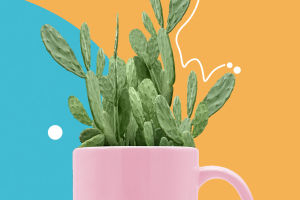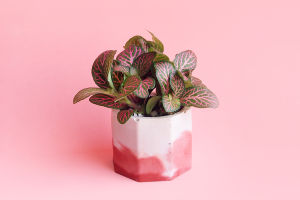Have you ever heard of hydroponics? More and more people are choosing to grow hydroponic plants at home because they don't have to worry about watering the plants, and they can grow with regular water changes.
If you're interested in keeping hydroponic plants, here are some suggestions that may help you.
1. Green radish
Step-by-step instructions:
Step 1: Cut
Choose a green radish with aerial roots and cut each leaf into multiple pieces.
Step 2: Rooting
You can put the cut green radish into a container filled with water and wait for the roots to grow, or you can use soil culture after the green radish has rooted, which has a much higher survival rate than direct cuttings.
Points to note:
The green radish is very vigorous and can be cultivated in any way, but hydroponics requires two points of attention. If you're not sure, you can place the water in the sun for a while to evaporate chlorine and other disinfecting substances. Additionally, you need to change the water regularly, usually once a week. This can reduce the waste of nutrients in the water because hydroponics has fewer nutrients than soil cultivation, and the growth of green radishes is slower.
2. Hanging orchid
Instructions:
a. Friends who have raised hanging orchids should know that the stolon stems of hanging orchids will be divided into many small hanging orchids. We can wait until the small hanging orchids grow to about 4-6 cm in size, put the stolon stems into the water for about 1 week, and the small hanging orchids will grow air roots. It is recommended to let the small hanging orchids grow more air roots.
b. Choose the more air roots to branch cut, and find a small container into which to place the hanging orchid. Because most of the air roots are up, we need to let the air roots grow down as much as possible. After about 15 days, the hanging orchid will be well-raised in the container.
3. Ivy
Randomly cut ivy paper strips, place them in water and put them in a place away from sunlight. Regularly change the water until the growth of young roots. After that, move it to a sunny spot and add a small amount of nutrient solution regularly.
4. Copper grass
a. Copper is suitable for rough and coarse cultivation. As long as it is given enough sunlight and water, it can grow very fast.
b. If you're indoors and don't have sunlight, you can use lights instead.
c. Water needs to be precipitated tap water for two hours or used every other day.
d. You can add a little nutrient solution to the water.
e. Cochineal usually has yellow leaves, but it fades at a much smaller rate than it grows, so don't worry about it.
f. The root system of coleus will grow green algae, but it can be left alone.
g. As long as the water doesn't stink, just add water to it and spray the foliage frequently.
5. Narcissus
Hydroponics points:
a. Narcissus should be kept in well water, rainwater, river water, or river water. If you use tap water, you should clarify the water in the basin or tank 2-3 days in advance, and then take shallow water to keep it.
b. Change the water once a day; otherwise, the unclean water will affect the growth of daffodils. In addition, daffodils have a lot of nutrients in their flower bulbs, so you can skip this step of fertilization and remember to change the water regularly.
c. The ethylene and other gases released by various fruits accelerate the withering of flowers and shorten the flowering period.
d. If the phenomenon of "dumb flowers" occurs in daffodil hydroponics, you can find the reason from the water quality, sunlight, and the behavior of water changes, if water changes accidentally hurt the root system and scape of daffodils, the phenomenon of "dumb flowers" will also occur.


